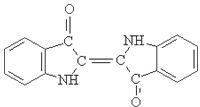Indigo Fabric Dye Factory - Authentic Indigo Dyes for Sustainable Fashion
The Art and Science of Indigo Fabric Dyeing
Indigo fabric dyeing is an ancient craft that has transcended time and geography, weaving together cultural narratives and artistic expression. The deep, rich hues of indigo have adorned garments and textiles for centuries, making it one of the most cherished dyes in the world. This article explores the fascinating process behind indigo dyeing, the significance of indigo in various cultures, and the sustainable practices of modern indigo fabric dye factories.
The Art and Science of Indigo Fabric Dyeing
The dyeing process itself is an art that has been honed over generations. In traditional settings, artisans use a method called shibori, which involves binding, stitching, or folding the fabric to create unique patterns. Each piece dyed in this manner tells a different story, revealing the maker's skill and creativity. The fabric is repeatedly dipped into the indigo bath, gradually building up layers of dye. As the fabric emerges from the vat, it appears green due to the presence of reduced indigo, but it oxidizes to a deep blue when exposed to air. This transformation adds an element of magic to the dyeing process, captivating both artisans and onlookers alike.
indigo fabric dye factory

Indigo has significant cultural importance across various regions. In Japan, for instance, the use of indigo dye can be traced back to the Edo period, where artisans created intricate patterns that represented nature, creating highly sought-after textiles such as boro and kasuri. In West Africa, indigo dyeing is intertwined with local customs and community practices, often viewed as a rite of passage for women in textile crafts. The indigo blue fabric, known as adire, holds deep cultural significance, representing identity and heritage.
In recent years, the demand for sustainable fashion has led to a resurgence in indigo dyeing, positioning modern indigo fabric dye factories at the forefront of this movement. Unlike synthetic dyes, natural indigo is biodegradable and poses minimal harm to the environment. Many manufacturers are now adopting eco-friendly practices, utilizing organic materials and water-efficient dyeing methods. Through collaboration with local artisans, these factories not only preserve traditional techniques but also empower communities by providing fair wages and promoting heritage crafts.
In conclusion, the world of indigo fabric dyeing is a harmonious blend of artistry, culture, and sustainability. From the meticulous cultivation of indigo plants to the intricate dyeing techniques passed down through generations, this craft embodies a rich tapestry of human creativity and connection to the environment. As we embrace sustainable practices, the legacy of indigo dyeing continues to thrive, ensuring that this beautiful tradition endures for generations to come.
-
The Timeless Art of Denim Indigo Dye
NewsJul.01,2025
-
The Rise of Sulfur Dyed Denim
NewsJul.01,2025
-
The Rich Revival of the Best Indigo Dye
NewsJul.01,2025
-
The Enduring Strength of Sulphur Black
NewsJul.01,2025
-
The Ancient Art of Chinese Indigo Dye
NewsJul.01,2025
-
Industry Power of Indigo
NewsJul.01,2025
-
Black Sulfur is Leading the Next Wave
NewsJul.01,2025

Sulphur Black
1.Name: sulphur black; Sulfur Black; Sulphur Black 1;
2.Structure formula:
3.Molecule formula: C6H4N2O5
4.CAS No.: 1326-82-5
5.HS code: 32041911
6.Product specification:Appearance:black phosphorus flakes; black liquid

Bromo Indigo; Vat Bromo-Indigo; C.I.Vat Blue 5
1.Name: Bromo indigo; Vat bromo-indigo; C.I.Vat blue 5;
2.Structure formula:
3.Molecule formula: C16H6Br4N2O2
4.CAS No.: 2475-31-2
5.HS code: 3204151000 6.Major usage and instruction: Be mainly used to dye cotton fabrics.

Indigo Blue Vat Blue
1.Name: indigo blue,vat blue 1,
2.Structure formula:
3.Molecule formula: C16H10N2O2
4.. CAS No.: 482-89-3
5.Molecule weight: 262.62
6.HS code: 3204151000
7.Major usage and instruction: Be mainly used to dye cotton fabrics.

